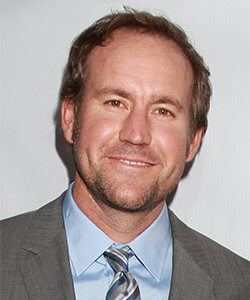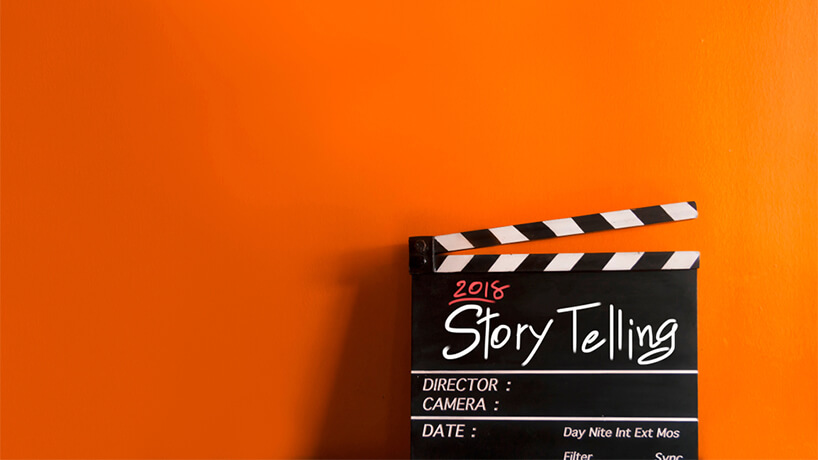An event is not an agenda. It’s an opportunity to tell a meaningful story about your organization. Here’s some advice from an expert whose stories appear on the big screen.
In an age where anyone can answer the question “What’s happening?” with a 280-character post, many of us have traded thoughtful reflections on the world for short, real-time updates. Forget perspective — many of today’s communications don’t even include punctuation. This shift to bite-sized snippets of information is actually making well-crafted, long-form stories — not lengthy white papers or 100-slide PowerPoint decks — more valuable than ever.
“While storytelling is mostly associated with entertainment, education, and culture, it also plays a major role in business,” Irving Wladawsky-Berger, a research affiliate at MIT’s Sloan School of Management and a former strategic advisor to Citigroup and HBO, wrote in a piece for The Wall Street Journal. “Storytelling is widely used in the development of brands for products as well as companies. And, the more powerful, important, and complex the brand messages you are trying to convey, the more important it is that you do so by telling a compelling but simple — i.e., understandable story.”
There is no better place to bring those brand messages to life than a meeting or an event. For many organizations that only bring their communities together once a year, that’s a big challenge: Pack all the information about new initiatives and new products into a narrative.
Bringing Storytelling Lessons from the Big Screen to Your Stage

Shaun MacGillivray
At the Destinations International Annual Convention in Anaheim earlier this month, I attended a session presented by someone who has mastered the art of storytelling: Shaun MacGillivray, president and producer of California-based film studio and entertainment company MacGillivray Freeman. MacGillivray has directed and produced award-winning 3D giant-screen films including National Parks Adventure and America’s Musical Journey, two films for Brand USA’s efforts to attract international travelers. (Watch the trailer for America’s Musical Journey here.)
MacGillivray shared a list of his essential tools for telling attention-grabbing stories that connect with any audience. While you aren’t producing films for IMAX theaters, these lessons can help boost your creativity for a more engaging experience.
1) Use visuals. This first piece of advice might seem obvious coming from someone who makes movies, but the importance of experimenting with the right images — both still and moving — should resonate with anyone who organizes events. Words can only do so much (and that’s coming from someone who makes a living by writing words). As you develop signage and logos and choose images for the big screens in your general session, pay close attention to every picture and graphic choice.
2) Help your audience learn something new. “Educate while being entertaining,” MacGillivray told the audience. For example, in the National Parks film they created for Brand USA, MacGillivray used a camping trip that President Teddy Roosevelt took with naturalist John Muir to tell the story of how the federal government began protecting the country’s wilderness. “We had to find a balance,” he said, “between the adventure and the beauty of the parks with the real story behind how they came to be.”
3) Emotion is the key ingredient. “This is by far the most important,” MacGillivray said. “You need to emotionally connect with your audience.” In the events industry, establishing that emotional connection relies on the voices on stage. From choosing the right keynote speakers to asking scholarship recipients to share their personal perspectives, event organizers must identify the characters who can tug on heartstrings.
4) Surprise your audience. “Create some unexpectedness in your story,” MacGillivray said. For example, the National Parks film didn’t just focus on Yosemite, Yellowstone, and the usual high-profile suspects of American wilderness. It also featured Pictured Rocks National Lakeshore, an ice-climbing destination in Michigan’s Upper Peninsula.
5) Make them laugh. If you’re able to do it right, MacGillivray said, “infusing humor into the story can make a huge impact.” For the National Parks movie, an unexpected character — a prairie dog — lent the right comedic touch.
6) Know your audience, and know your platform. “We create films that are about 40 minutes in length,” MacGillivray said, “but we shoot hundreds of hours of footage. And we’re constantly thinking about ways to chop up the content for Netflix, Facebook, YouTube, and any other channel where our audience wants to watch.” For event organizers who capture countless hours of education sessions, it’s important to identify similar ways to leverage portions of that material in on-demand webinars, short videos for social media, and any other platform that engages eyes and ears.
7) The music matters. Speaking of ears, MacGillivray said that the soundtrack behind a story can define its success. “If the song moves you and it hits you in the gut, you’ve got something,” he said. “If it doesn’t, it’s time to look for something else.” Whether you’re looking for the right songs for an opening-session video or the closing keynote, remember how important music is in setting the mood.
Interested in more storytelling tips? Register for a premium content subscription for access this session with award-winning storyteller Kindra Hall.

